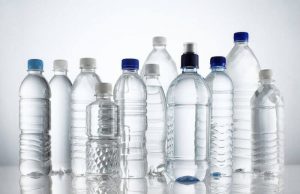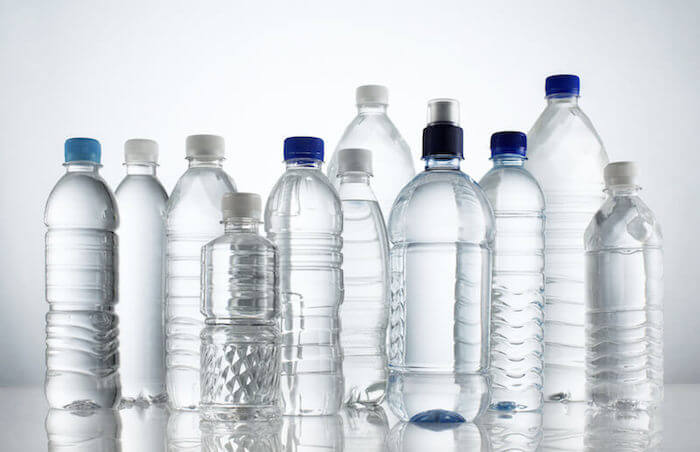 The use of glass may be making a comeback when it comes to common kitchen items like cups and storage containers, but there is no denying the ubiquity of plastics in everyday consumer goods. Pre-packaged foods, soda bottles, milk cartons, and shower curtains.
The use of glass may be making a comeback when it comes to common kitchen items like cups and storage containers, but there is no denying the ubiquity of plastics in everyday consumer goods. Pre-packaged foods, soda bottles, milk cartons, and shower curtains.
These are a few of the many objects where one will find the use of plastic. Its popularity is no surprise, considering its inexpensiveness and resiliency. While some plastics are generally safe, there are negative health effects associated with this durable material.
Now let’s take a look at what the numbers on your plastic containers mean…
What Do Those Numbers Mean?
If you’ve ever used a plastic container– or any other product containing plastic, then I’m sure you’re familiar with the small “recycle” symbol located on it. The symbol almost always has a number in it. This is the number we’re looking for. Why?, you might ask.
Well, this number is known as the resin identification code (RIC). The RIC is a number ranging from one to seven, that tells us the type of plastic we’re dealing with. Once we know the RIC for a given plastic, we can further investigate the properties and other important information about it.
The Seven Different Plastics
Plastic #1: POLYETHYLENE TEREPHTHALATE (PET)
Where is it Found?
Some common products that use PET plastic:
- Bottled water & soda
- Peanut butter containers
- Ketchup bottles
- Most clear plastic containers for foods, condiments, and cleaning detergents
Is it Safe?
In the past, PET was considered safe; however, research conducted on products using PET containers shows evidence of the element antimony present in the products tested. This implies that it seeped into the product over time.
Though the element antimony is considered safe in small amounts according to the US Environmental Protection Agency, there may still be a cause for concern.
Under some conditions (such as leaving the plastic out in very hot weather), the leaching occurs more rapidly, which results in slightly higher levels of antimony in the product.
While the effects of antimony in small amounts are considered virtually harmless, larger amounts may cause stomach irritation, vomiting, and diarrhea. The levels of antimony that leach into plastic under recommended usage are not high enough to cause any ill effects. Overall, this plastic is safe to use, granted it is not exposed to very hot temperatures or stored for prolonged periods of time.
Recyclability
PET is an easily recyclable plastic that is reformed or repurposed into products such as carpets, jackets, and filling for sleeping bags.
Plastic #2: HIGH DENSITY POLYETHYLENE (HDPE)
Where is it Found?
You will likely find HDPE plastic in:
- Milk & water jugs
- Laundry detergent containers
- Motor oil containers
- Shampoo bottles
Is it Safe?
HDPE is relatively safe. Like PET, this plastic can potentially release harmful materials into the product being consumed. These problems appear to arise more when the plastic undergoes everyday stress– for example, exposure to UV rays (sunlight). In one study, exposure to UV light showed an increase in chemicals that have estrogenic activity (EA) in HDPE containers. Plastics #4 and #5 also show evidence of this.
Recyclability
HDPE plastic is typically recycled into new containers of a similar type as listed above (e.g. milk jugs, motor oil containers).
Plastic #3: PLASTIC #3 – (PVC OR V)
Where is it Found?
PVC or Vinyl are found in products such as:
- Vinyl siding
- PVC pipes
- Shower curtains
- Shrink wrap
Is it Safe?
PVC is considered a harmful plastic, which explains why it is not used very much, if at all for consumer goods. Exposure to this plastic could occur at home if you have vinyl flooring, vinyl shower curtains, PVC piping, or anything else containing PVC or vinyl. The health problems come into play moreso if you’re exposed to this plastic during its creation, disposal, or destruction.
Since PVC has high levels of chlorine, it releases a set of byproducts known as dioxins that cause harm. These dioxins are released into the air and / or water when PVC is created, burned, or broken down. Exposure to Dioxins can potentially cause problems with reproductive health, and development in children.
More health concerns arise when cutting or breaking PVC products. The cutting or breaking of PVC can create dust. Exposure to the dust of this PVC may cause asthma-like symptoms, and other respiratory issues.
It is important to wear a mask when exposing yourself to prevent inhalation. In short, it is best to avoid being around PVC when it is manufactured, burned, or broken apart.
Recyclability
Since harmful chemicals are released during disposal, recycling of PVC is not common.
Plastic #4: LOW DENSITY POLYETHELENE (LDPE)
Where is it Found?
You’ll find this very thin and flexible plastic in items like:
- Bread bags
- Frozen food bags
- Grocery bags
- Plastic wraps
Is it Safe?
A relatively safe plastic, but not totally health proof. Under a study where LDPE plastic was put under UV light, the increase of a chemical that increases estrogenic activity (EA) was detected. The implications of such a chemical are not completely clear, as there is more research to be done.
It is still important to take precautions when dealing with any kind of plastic, as more and more research is revealing the harmful effects of plastic.
Recyclability
LDPE is usually not recycled.
Plastic #5: POLYPROPYLENE (PP)
Where is it Found?
Polypropylene is found in objects like:
- Yogurt containers
- Syrup containers
- Disposable diapers
- Disposable straws
Is it Safe?
Polypropylene is considered a relatively safe plastic, but like LDPE and HDPE, there is some evidence of chemicals that increase estrogenic activity (EA) leaching into the containers. One study suggests that overexposure to EA can be the source of harmful health effects in mammals such as: early onset of puberty in females, reduced sperm count, and increased rates of cancer for reproductive organs.
Those most at risk for these effects are unborn babies, newborns, and young children. Be sure to look for plastic containers (especially for your young!) that are both BPA-free and EA-free.
Recyclability
Since items containing polypropylene are diverse, it makes recycling difficult. For this reason, it is not commonly recycled.
Plastic #6: POLYSTYRENE (PS)
Where is it Found?
Another common name for polystyrene is Styrofoam. Common objects made from this are:
- Egg cartons
- Styrofoam food containers
- Building insulation
- Packaging peanuts
Is it Safe?
Like the other relatively harmful plastics listed above, problems arise when the plastic starts to break down. The issue with polystyrene is that the chemical styrene can leach from it. Short term exposure to styrene can cause eye, nose, lung, and stomach irritation. Chronic exposure to styrene can cause more serious problems with the central nervous system in addition to: headache, depression, fatigue, weakness. It is best to avoid consumer products that use polystyrene– especially in cases where it will break down (e.g. microwaving food on a styrofoam plate). It would be wise to avoid this type of plastic when it comes to eating or drinking.
Recyclability
Polystyrene is not commonly recycled.
Plastic #7: MIXED (OTHER)
Where is it Found?
Since plastic #7 is not a specific type of plastic. It includes a wide variety of common objects.
- Electronics
- Lids
- Clear plastic cutlery
- Baby bottles
Is it Safe?
Because plastic #7 often contains a mix of plastics, it is difficult to know the health concerns associated with its use. One concern with using the mixed variety of plastic is knowing whether or not it contains bisphenol A (BPA). BPA is still undergoing much research, but it is established that fetuses, infants, and children are most at risk for the effects of BPA.
The most concerning health risk with exposure to BPA is developmental issues in the brain. This can cause a variety of other health and behavioral issues down the line. With this in mind, it is advised to avoid exposing unborn babies, infants, and children to BPA.
Again, opt for BPA-free and EA-free containers, which are relatively easy to find online and in supermarkets. The safest routes to take are to either avoid plastic #7 altogether (that aren’t BPA-free), or contact the manufacturer for the plastic item in question. While the second option isn’t very practical, it is a surefire way to know which type of plastic (or plastics) you’re using.
Recyclability
Since #7 plastics are usually a mix of different types of plastics, it makes practical recycling nearly impossible.
Now What?
Now that you know more about the different types of plastics all around, you can be more confident in knowing which ones are okay to use, and which ones to avoid. Plastics #1, #2, #4, and #5 are considered relatively safe. Plastics #3, #6, and #7 are more likely to cause harm to your health, and should be avoided whenever possible.
Last Minute Tips
Some easy tips to lower your risk of exposure to the harmful effects of plastic:
One of the easiest ways to lower risk is to only use the plastic one time. Plastic begins to degrade when it is exposed to stresses such as temperature and cleaning agents.
It is advised to store bottled water or other plastic-contained foodstuffs away from hot environments (e.g. car, garage). In PET containers (e.g. bottled water), leaching of the harmful element antimony has been shown to occur more rapidly under such hot conditions.
Avoid microwaving food in plastic containers. This has been shown to degrade the plastic material more quickly which may increase the transfer of harmful chemicals into foods or beverages.
Avoid exposing plastic to UV rays (sunlight). When the various plastics are put under stress such as UV light, the potential for degradation increases. More health risks come into play after plastic degrades..
Avoid washing plastics with harsh soaps. This is yet another way to increase the likelihood of degrading the plastic. If you must, use a soap that is less harsh.
Avoid boiling plastic. Although this may seem like a safe way to sterilize plastic, it increases the likelihood for the plastic to break down and release harmful chemicals.
Be sure to wear a proper mask if you must work with burning plastic fumes or plastic dust. Acute inhalation of plastic fumes, or plastic dust (especially PVC) may cause irritation to eyes, nose, lungs, and stomach.
Use safer alternatives to plastic whenever possible (glass, metal, wood, and bamboo). These alternatives might be more expensive, but consider it a healthy step on the way to lowering your risk to the potential harms of plastic.
Do you know some of these plastics can damage your digestive issues, protect your gut by avoiding the problematic plastics and follow the 3 digestive tips on the next page.
About the Author:
Emma Deangela is the best selling author of The Alkaline Diet Program and 80/20 Fat Loss. She has helped over tens of thousands of men and women to lose weight and transform their health with sound nutrition advice. Check out her 4 foods to never eat for breakfast video to lose more than 18 lbs in 3 weeks.
Which wonderful friends in your life would appreciate these information about plastics?
Please help them by sharing this eye-opening article with each of them using any of the social media and email buttons below.


Leave a Reply